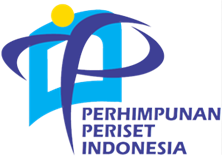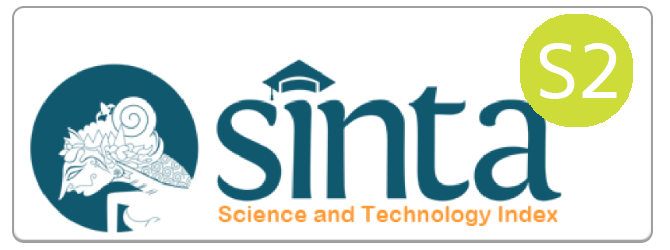Harmonisasi Doktrin Tasawuf dan Al-Qur’an dalam Kitāb al-‘Ishq
Abstract
The tendency to bring Sufism closer to the main sources of Shari'a in Indonesian contexts began in the 17th century. One manuscript that strongly indicates this phenomenon is the Kitāb al-'Ishq (The Nature of Jamāl and Jalāl), DS 0012 00001, a Sufism text from the Kuningan area which is thought to have been written in the 18th–19th centuries. This philological study aims to reveal how Kitāb al-'Ishq contributed to promoting philosophical Sufism, in this case the doctrine of Nūr Muḥammad, which in fact is part of the doctrine of Martabat Tujuh. This study shows that Kitāb al-'Ishq has at least two important contributions. First, Kitāb al-'Ishq contributes to showing the harmony of Nūr Muḥammad's doctrine with the Shari'a, namely by providing a number of Qur'ānī arguments. From a number of arguments presented, it appears that this text is still connected to the thoughts of several previous Middle Eastern Sufi figures, such as Saḥl al-Tustarī, al-Qushayrī and 'Abd al-Qādir al-Jīlānī. Second, Kitāb al-'Ishq shows the author's efforts to ground his doctrine, namely by using metaphors and analogies that are popular among Indonesian people in explaining the concept of Nūr Muḥammad with the aim of making it easy to digest and acceptable. Its position in Kuningan proves that in the Indonesian context, the tendency to harmonize Sufism with the Al-Qur'an and Hadith does not only occur in the Sumatra region, but also in West Java.
Keywords
Full Text:
PDFReferences
Al-Attas, Syed Muhammad Naguib. 1966. “THE MYSTICISM OF HAMZAH FANSURl.” University of London.
Al-Jīlānī, ‘Abd al-Qādir. 1994. Sirr Al-Asrār Wa-Mazhar Al-Anwār. 3rd ed. edited by K. M. Adnan and M. G. N. ’Azqul. Damaskus: Dar al-Sanabil.
Al-Jīlī, ‘Abd al-Karīm. 2010. Qaba Qawsayn Wa Multaqa Al-Namusayn Fi Ma’rifah Sayyid Al-Kauwnain. 1st ed. Beirut: Dar al-Kutub al-Ilmiyah.
Al-Nabhānī, Yūsuf bin Ismā’īl. 2012. Al-Haqiqah Al-Muhammadiyah ’inda Aqthab Al-Sadah Al-Shufiyyah. 1st ed. Beirut: Books Publisher.
Al-Qushayrī, ’Abd al-Karim bin Hawazan. n.d.-a. Laṭāif Al-Ishārāt. Vol. 3. edited by I. Basuni. Kairo: Al-Hay’ah Al-Miṣrīyah Al-’Ammah li Al-Kitāb.
Al-Qushayrī, ’Abd al-Karim bin Hawazan. n.d.-b. Laṭāif Al-Ishārāt. Vol. 2. edited by I. Basuni. Kairo: Al-Hay’ah Al-Miṣrīyah Al-’Ammah li Al-Kitāb.
Al-Rāzī, Fakhr al-Dīn. 2000a. Mafātiḥ Al-Ghayb. Vol. 25. Beirut: Dar Ihya al-Turath al-‘Araby.
Al-Rāzī, Fakhr al-Dīn. 2000b. Mafātiḥ Al-Ghayb. Vol. 31. Beirut: Dar Ihya al-Turath al-‘Araby.
Al-Tustarī, Abū Muḥammad Sahl b. ʿAbd Allāh. 2011. Tafsīr Al-Tustarī. Translated. Amman, Jordan: Royal Aal al-Bayt Institute for Islamic Thought.
Andani, Khalil. 2019. “Metaphysics of Muhammad The Nur Muhammad from Imam Ja‘far Al-Sadiq (d. 148/765) to Nasir Al-Din Al-Tusi (d. 672/1274).” Journal of Sufi Studies 8:99–175. doi: 10.1163/22105956-12341317.
Azra, Azyumardi. 2023. Jaringan Ulama Timur Tengah & Kepulauan Nusantara Abad XVII & XVIII. Edisi Pere. Jakarta: Kencana.
Bakr, Omaima Abou. 1992. “The Symbolic Function of Metaphor Function The Symbolic The Case of Shushtari Medieval Sufi Poetry.” Alif: Journal of Comparative Poetics 12. doi: 10.2307/521635.
Bana’marah, Muḥammad. 2000. Al-Ṣufīyah Fi Al-Shi’r Al-Maghribī Al-Mu’āṣir. 1st ed. al-Madāris: al-Dar al-Baydla’.
Van Bruinessen, Martin. 1992. Tarekat Naqsyabandiyah Di Indonesia. Revisi. Bandung: Mizan.
Budaud, Wudznani. 2013. “Sirr Al-Nuqṭah Wa Al-Ḥuruf Fī Al-Kitābah Al-Sūfīyah.” ’Ulum Al-Lisan 2(1).
Christomy, Tommy. 2008. Signs of the Wali: Narratives at the Sacred Sites in Pamijahan, West Java. Canberra Australia: ANU E Press.
Fathurahman, Oman. 1998. “Tanbih Al-Masyi Al-Mansub Ila Tariq Al-Qusyasyiyy.” Universitas Indonesia.
Fathurahman, Oman. 2003. “Reinforcing Neo-Sufism in the Malay-Indonesian World: Shattayriyyah Order in West Sumatra.” Studia Islamika 10(3):29–93. doi: 10.15408/sdi.v10i3.623.
Fathurahman, Oman. 2008. Tarekat Syattariyah Di Minangkabau. 1st ed. Jakarta: Prenada Media Group, École française d’Extrême-Orient, Pusat Pengkajian Islam dan Masyarakat (PPIM) UIN Jakarta, KITLV.
Fathurahman, Oman. 2011. “Sejarah Pengkafiran Dan Marginalisasi Paham Keagamaan Di Melayu Dan Jawa.” Analisis XI(2):447–74. doi: https://dx.doi.org/10.24042/ajsk.v11i2.624.
Fathurahman, Oman. 2012. Itḥāf Al-Dhakī : Tafsir Wahdatul Wujud Bagi Muslim Nusantara. Bandung-Jakarta: Mizan-EFEO.
Fathurahman, Oman. 2022. Filologi Indonesia: Teori Dan Metode. Revisi. Jakarta: Kencana.
Gačanin, Sabaheta. 2012. “Terms and Metaphors in Tasawwuf Discourse.” Philosophy Study 2(4):275–85.
Hadi, Abdul W. M. 2001. Tasawuf Yang Tertindas, Kajian Hermeneutik Atas Karya-Karya Sastra Hamzah Fansuri. Jakarta: Paramadina.
Hadi, Abdul W. M. 2007. “Syair-Syair Hamzah Fansuri Dan Pengaruhnya.” Al-Turas 13(1). doi: 10.15408/bat.v13i1.4231.
Irani, Ayesha A. 2016. “The Prophetic Principle of Light and Love: Nūr Muḥammad in Early Modern Bengali Literature.” History of Religions 55(4). doi: 10.1086/685571.
Islam, M. Adib Misbahul. 2020. Rahasia Segala Rahasia. Jakarta: Perpusnas Pres.
Johns, Anthony H. 1965. The Gift Addressed to The Spirit of The Prophet. Canberra: The Australian National University.
Keeler, Annabel. 2006. “Ṣūfī Tafsīr as a Mirror: Al-Qushayrī the Murshid in His Laṭāʾif Al-Ishārāt.” Journal of Qur’anic Studies 1–21.
Maknun, Moch Lukluil, and Umi Muzayanah. 2020. “CONTEXTUALIZATION OF SULUK CANDRA ’ S CHARACTER VALUES.” HERITAGE OF NUSANTARA: INTERNATIONAL JOURNAL OF RELIGIOUS LITERATURE AND HERITAGE 9(1):1–33. doi: 10.31291/hn.v9i1.563.
Masrur, M. 2012. “Kyai Soleh Darat, Tafsir Faid Al-Rahman Dan RA. Kartini.” At-Taqaddum 4(1). doi: 10.21580/at.v4i1.725.
Miswari, Abdul Aziz Dahlan, and Abdul W. M. Hadi. 2022. “Ḥamzah Fanṣūrī ’s Contextual Analogies: Wujūdiyya Teaching in Malay 16 Th Century.” Teosofia: Indonesian Journal of Islamic Mysticism 11(1):103–22. doi: 10.21580/tos.v11i1.11243.
Mustaqim, Abdul. 2017. “The Epistemology of Javanese Qur’anic Exegesis: A Study of Ṣāliḥ Darat’s Fayḍ Al-Raḥmān.” Al-Jāmi‘Ah 55(2):357–90. doi: 10.14421/ajis.2017.552.357-390.
Muzakki, Akhmad, and Irham. 2021. “Tensions of Adam and Iblis in the Quran: The Imagology Approach.” International Journal of Applied Linguistics and English Literature 10(2):56. doi: 10.7575/aiac.ijalel.v.10n.2p.56.
Rahmani, Mansure, Ahad Faramarz Gharamaleki, and Hassan Arif. 2018. “Journey in Sufism.” Journal of Sufi Studies 7:125–39. doi: 10.1163/22105956-12341310.
Riddell, Peter G. 1989. “Earliest Quranic Exegetic Activity in the Malay Speaking States.” Archipel 38(1):107–24. doi: 10.3406/arch.1989.2591.
Riddell, Peter G. 2017. Malay Court Religion, Culture and Language (Interpreting the Qurʾān in 17th Century Aceh). Leiden-Boston: Brill.
Rohmana, Jajang A. 2012. “Sundanese Sufi Literature and Local Islamic Identity: A Contribution of Haji Hasan Mustapa’s Dangding.” Al-Jami’ah: Journal of Islamic Studies 50(2):303–27. doi: 10.14421/ajis.2012.502.303-327.
Rohmana, Jajang A. 2015. “SASTRA SUFISTIK MELAYU DAN SUNDA DI NUSANTARA: MEMPERTEMUKAN HAMZAH FANSURI DAN HAJI HASAN MUSTAPA.” IBDA` : Jurnal Kajian Islam Dan Budaya 13(1):1–27. doi: 10.24090/ibda.v13i1.486.
Rohmana, Jajang A. 2020. “Tasawuf Sunda Dan Warisan Islam Nusantara: Martabat Tujuh Dalam Dangding Haji Hasan Mustapa (1852-1930).” Buletin Al-Turas 20(2):259–84. doi: 10.15408/bat.v20i2.3760.
Rohmana, Jajang A. 2021. “Diskursus Tasawuf Nusantara Di Mekah : Respons Mukhtār ‘ Aṭārid Al- Bughūrī Terhadap Ajaran Martabat Tujuh the Discourse of Malay-Indonesian Sufism in Mecca : A Response of Mukhtār ‘ Aṭārid of Bogor Towards the Doctrine of Seven Grades.” Jurnal Lektur Keagamaan 19(1):1–36. doi: 10.31291/jlk.v19i1.923.
Rubin, Uri. 2011. “Pre-Existence and Light Aspects of the Concept of Nur Muhammad.” Israel Oriental Studies 5:62–119.
Sands, Kristin Zahra. 2006. Sufi Commentaries on the Qur’an in Classical Islam. London and New York: Taylor & Francis e-Library.
Schimmel, Annemarie. 1975. Mystical Dimensions of Islam. Chapel Hill: The University of North Carolina Pres.
Seyed-Gohrab, Asghar. 2020. “Rūmī’s Antinomian Poetic Philosophy.” 9(2018):159–99. doi: 10.1163/25898566-00901009.
Steenbrink, Karel. 1995. “Qur’an Interpretations of Hamzah Fansuri (CA. 1600) and Hamka (1908-1982): A Comparison.” Studia Islamika 2(2). doi: 10.15408/sdi.v2i2.835.
Whittingham, Martin. 2007. Al-Ghazālī and the Qur’ān. London & New York: Taylor & Francis e-Library.
DOI: https://doi.org/10.18784/smart.v10i1.2232
Refbacks
- There are currently no refbacks.
Copyright (c) 2024 Saifir Rohman

This work is licensed under a Creative Commons Attribution 4.0 International License.







